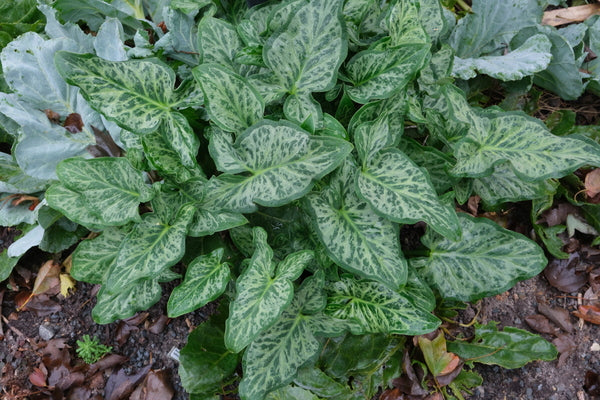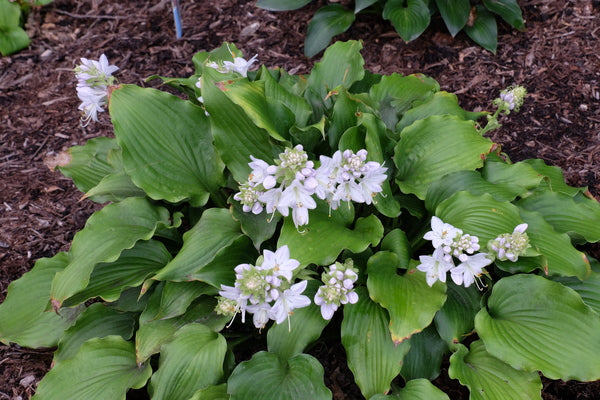The following article is part of a series geared toward entry-level gardeners. For deep dives into a variety of perennials that we have sold over the decades, visit our archive of in-depth perennial articles written by Tony Avent, Dr. Patrick McMillan, and other Plant Delights and JLBG experts. We also have transcripts of our Gardening Unplugged videos, recorded during our Open Nursery and Garden Days, that have great information for gardeners of all experience levels.
If you're a beginner gardener looking for a beautiful and easy-to-grow flowering plant, then arum lilies might just be the perfect choice for you. With their striking, elegant appearance and relatively low maintenance requirements, arum lilies are a popular choice among gardeners of all skill levels. In this article, we'll take a closer look at these versatile plants, exploring their unique characteristics, preferred growing conditions, and tips for successful cultivation. Whether you're looking to add some visual interest to your garden, or simply want to try your hand at growing a new type of plant, arum lilies are definitely worth considering. The genus Arum is a group of plants that exhibit several unique and interesting characteristics. One of the most striking features of these plants is their unusual and often showy flowers, which are typically hooded or funnel-shaped and consist of a long central spadix surrounded by a large, colorful spathe. Some species, such as Arum italicum, have an unpleasant odor that attracts pollinating insects. Another interesting trait of some Arum species, such as Arum maculatum, is their ability to generate heat through a process called thermogenesis. This heat helps to create a more favorable environment for pollinators and can aid in successful reproduction. Several species of Arum are also carnivorous, using their flowers to trap and digest small insects. The spathe of these plants is often shaped like a funnel, with a slippery surface that causes insects to fall inside, where they are trapped and digested. Like arum lilies, many species of Arum grow from tuberous roots, which are fleshy, bulb-like structures that store nutrients and water. These roots help the plant survive during periods of drought. However, it's important to note that many species of Arum, including Arum maculatum and Arum italicum, are toxic if ingested and can cause severe irritation to the mouth and throat.
Arum concinnatum 'Suspeck'
Overall, the genus Arum includes a diverse and fascinating group of plants, each with their own unique adaptations and characteristics. From their unusual flowers to their carnivorous tendencies and thermogenic abilities, Arum plants are sure to capture the interest of anyone interested in the natural world.
Tips for Growing Arum Lilies
Here are some tips for growing plants in the genus Arum:
- Choose the right location: Arums prefer moist, well-drained soil and partial shade to full shade. Choose a location in your garden that provides these conditions, and avoid planting Arum in areas that are prone to drought.
- Plant in the right season: The best time to plant Arum is in the fall, after the hottest part of the year has passed. This will give the plants time to establish their roots before the cold winter weather sets in.
- Provide regular water: Arum lilies require regular watering, especially during the growing season. Keep the soil consistently moist but not waterlogged, as waterlogged soil can cause root rot.
- Fertilize sparingly: Arum don't require a lot of fertilizer, and too much can actually harm the plant. Apply a balanced, slow-release, organic fertilizer sparingly in the spring and summer.
- Watch for pests and diseases: Arum plants are generally resistant to pests and diseases, but they can sometimes be affected by fungal diseases or pests like slugs and snails. Watch for signs of damage and treat as needed with an appropriate fungicide or pest control method.

Arum x diotalicum 'Love Child' - Divide and transplant as needed: Arum plants can become crowded over time, leading to reduced flowering and growth. Divide the plants every few years and transplant them to new locations in your garden to promote healthy growth.
By following these tips, you can successfully grow Arum plants in your garden and enjoy their unique and fascinating characteristics.
Hosta 'A Scape Plan'
Can Arum Lilies be Planted in Containers?
Yes. Planting arums in containers is a great way to add a touch of exotic elegance to your garden or home. To plant arums in containers, choose a pot with good drainage and fill it with a well-draining potting mix. Plant the arum bulb with the pointed end facing up, and cover it with soil. Water the plant well, and place the container in a warm, bright location with indirect sunlight. Arums prefer moist, but not waterlogged soil, so be sure to water the plant regularly, but allow the soil to dry out slightly between watering. With proper care, your arum plant will grow and thrive in its container, producing beautiful and unique flowers that will add beauty and interest to your space.
Heuchera 'Cajun Fire' PP 24,150
Arum Companion Plants
Arum plants are an ideal addition to any shade garden, and there are several companion plants that can complement their unique characteristics. Hostas are a classic choice for a shade garden and work well with Arum due to their similar soil and light requirements. They come in a range of shapes and sizes, making them a versatile choice for any garden. Ferns are another excellent companion plant for Arum, as they add a lush, verdant feel to the garden and come in a range of textures and sizes. Heucheras, also known as Coral Bells, are a shade-loving perennial that add color to the garden with their leaves that come in a range of colors, from deep burgundy to bright lime green. They pair well with the colorful flowers and foliage of Arum. By selecting the right companion plants for your Arum, you can create a beautiful and cohesive shade garden that will thrive in a variety of conditions.
Why Not Give Arums a Try?
In conclusion, arums are a wonderful perennial that can add a touch of exotic elegance to any garden or indoor space. 
Arum italicum 'White Winter'


